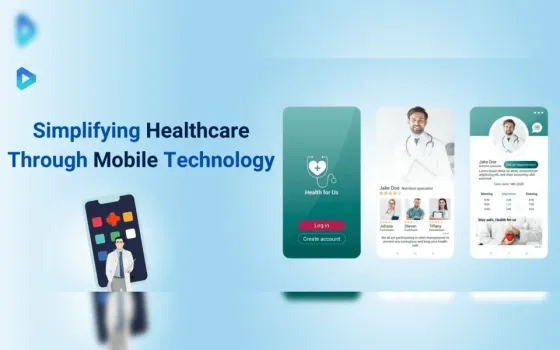The world is moving to a point where the definition of balance tends to change with the rising imbalance around the world. One of the major “taboo” that the world lives in is the fact that if healthcare is affordable, it will ultimately be highly qualified in terms of the facilities it provides. However, the sad truth is, this assumption fails to lose the authenticity once judged on the parameters of quality and ability to provide the facility.
In India, providing fine-tuned and fine quality of healthcare, both are still challenging. The public sector units and the government have done their best to manage a continuum that could accommodate the vision of quality and affordability both in the same kind of settlements. This, however, seems to face a number of hurdles every time. One of the reasons behind this is the budget constraints and also the amount of population to cater to in terms of a healthcare facility that is provided.
We must not underestimate the country though. This kind of problem is not just restricted to the third world. Developed nations like the US are also going through similar situations, on different tangents. We are all aware of the “Obamacare” program that became the flag bearer of former US President’s second term luck. Yet, as much as it made to the news, the reality deemed to accomplish the motive in the country.
The entire context is brought in order to explain the fact that it is not dependent on which level of per capita are you sitting on as a country, you still fail to give enough to healthcare. The US situation is the exact opposite of India. While they suffer from affordability, Indians struggle with both in the country, with the maximum bridge being between rural and urban.
Giving a little thought to the above analogy, let us say “You don’t have to be wealthy to be healthy” In one of the reports based on Ernst &Young survey, FICCI has shown how the cost for the private hospitals can just be lower. Hence, it is not the cost that matters more but the quality that must be provided. Let us site the report here,
“The report cites examples of a coronary bypass surgery, where procedure costs range between Rs 1,80,000 and Rs 2,10,000, while Ayushman Bharat tariff for a hospital accredited by the National Accreditation Board for Hospitals (NABH) is fixed at Rs 1,04,000, which is almost half the total cost. Angioplasty, another mass procedure to open up blocked coronary arteries costs around Rs 90000 – Rs 1,10,000, whereas Ayushman Bharat offers Rs 75000, which is 20-45 per lower.”
These aspects also gives us another edge over Medical Tourism in India. The country hosts one of the finest doctors with the most affordable treatment options. India, with the ancient science of medicine, has been a promising choice for many foreign visitors. They are enticed by the quality and the affordability of treatment they receive. Hence, the fact that money is not the only thing that drives India, assures the rest of the population that quality and affordability, both are taken care of.
With the coming up of private players and entrepreneurship in the business, it is supposed to comply well with quality and affordability. The Hybrid system and the new players have brought in ideas that strive to achieve the above-mentioned goals. Along, with those two, the idea of accessibility and availability has been kept in the bag, for Indian healthcare.
If the idea of medicine for an instant is taken, no one could have imagined medicine deliveries within such a limited amount of time at your doorsteps. This, in itself, was revolutionary in the first place. With the recent surveys and reports, you must look into the countries that outshone the rest with performance.
The five countries with the highest levels of healthcare access and quality according to THE LEGATUM PROSPERITY INDEX in 2019 were Singapore (Rank 1), Japan (Rank 2), Switzerland (Rank 3), South Korea (Rank 4), and Norway (Rank 5).
Give these stats a thought; you must understand the complexities here. These are countries that have population lesser than what India accommodates. As per the Economic Times report, it very clearly talks about how the population has been a major reason for the gap between affordable and quality healthcare. Subnational inequalities were particularly pronounced in China and India, although high-income countries, including England and the US, also saw considerable local gaps in performance.
Provided with these stats, what is the role of the private players in this? Well, this has many dimensions. The lack of enough workforces has also been one of the reasons for such a downfall. Yet, the silver lining to the cloud is the passion of the private players. Even if the part of “affordability” is not taken into consideration as of now, quality can very well be dealt with.
Understanding the basic economics behind such a model is very important. When you invest in technology, two things can happen; it would either make the system more efficient or can totally backfire. The best part about healthcare is the continuous experiments and their scrutiny. Hence, once technology graces healthcare, the investment is of high cost, however, the long term results are not.
This is where the private players come in as the knight in shining armor. You must have heard about the PPP model which has been in talks lately.
To make equitable healthcare a reality in India, and to keep pace with changing healthcare requirements (due to changing demographics, socio-economic mix, and disease incidence profiles), the public and private sectors must come together in a concerted effort to design suitable public health policies for the collection, allocation, and utilization of healthcare resources and funds.
The government at all levels is increasingly interested in PPP, based on utilization, viability gap funding, and subsidization for the below poverty line (BPL) population. In a mature framework, these opportunities can also be good vehicles for private investment.
Similarly, the government in some states has also been keen to outsource non-clinical services in all major hospitals. This is a great opportunity for private investment and participation. Private players in India can support and bring primary healthcare services and access to specialist care in rural areas through various health camps, collaborations, and partnerships with global healthcare service providers.
To cite an example of a PPP model, the IFFCO Group has partnered with Gramin Healthcare, India’s first start-up dedicated to supporting and bringing primary healthcare services and access to specialist care in rural areas. IFFCO and Gramin Healthcare have come together to provide affordable quality healthcare at their planned IFFCO Bazar Centers in 1000 locations pan India. Today, 15 kiosks are operational within IFFCO bazaar centers, in Tier III and Tier IV rural areas.
The idea of a new and better wellness center can make a huge change to accomplish the goals of quality and affordability. It must be understood that a little is better than nothing. Affordable must not be considered as the guarantee to the quality of the service that is provided.
Similarly, finding a match of high-quality service and affordable service is rare in India. As the WHO quotes, “India’s health-financing system is much more complex than those found in other developing countries.” This shows the vulnerability that hovers the medical institutes and facilities in the country.
A better approach to this has been provided by Business Line which is quoted as under
“The governments need to work collectively to ensure delivery of quality, accessibility, availability, and affordability. Quality is driven by market forces, but when supply is limited compared to demand, it takes a back seat. The governments and health regulatory bodies must ensure that quality standards and minimum patient safety protocols are enforced.”
At GoMedii, we establish a system that nurtures the idea of making the vision of lesser and lesser gaps between quality and affordability a success. This brings the constant desire of improving our reach, to all the sectors of the population and layers of the communities around. It is not an easy task to bridge the gap but one step ahead is always for the better.
Reference
1) FICCI
2) WHO
3) Business Line
4) Science Direct
5) National Academy for state health policy

















